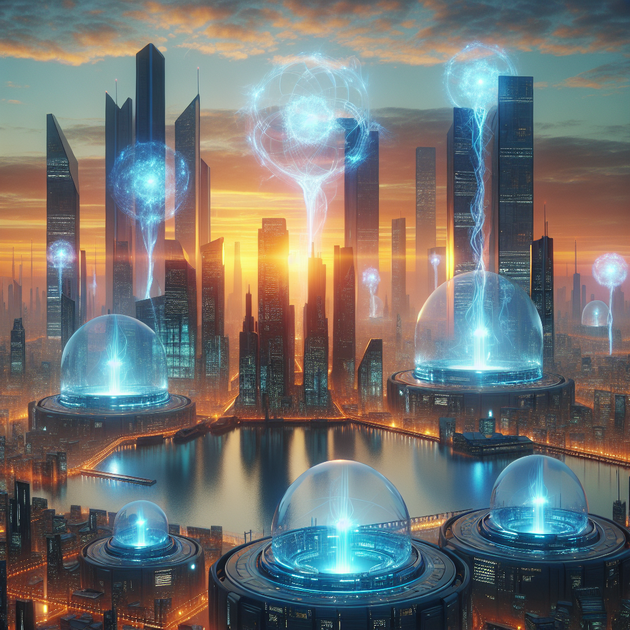Do you think it’s possible that by the early 2030s, you’ll be plugging your phone into an outlet powered by fusion energy? According to the U.S. Secretary of Energy (DOE chief), that future might be closer than we all thought—maybe only eight years away. That’s a pretty wild idea when you consider we’ve been chasing this “star power” for nearly a century.
What Is Fusion Energy—and Why Is It Such a Big Deal?
Fusion energy is often described as the “holy grail” of clean power. Unlike current nuclear plants (which use fission to split atoms), fusion smashes small atoms together—the same process that powers our sun—to create massive amounts of energy without the long-lived radioactive waste or carbon emissions.
But here’s the honest truth: for decades, it’s been more science fair project than power plant. The dream has always been to build reactors so efficient and safe they could provide endless clean electricity. But actually making it work outside of labs has been a huge technical challenge.
DOE Chief’s Bold Prediction: Commercial Fusion in Just 8 Years
At a recent event reported on Reddit and other outlets, the U.S. Department of Energy chief said something surprising—commercial electricity from fusion energy could arrive as soon as eight years from now. That means by 2032 or so, there could be real power flowing to homes and businesses from fusion reactors.
And if not eight? The DOE chief said she’d be “very surprised if it’s more than 15” years out. In other words, even skeptics inside government are starting to believe we could see commercial fusion by the late 2030s at the latest.
Why is this such a big shift? For decades, people have joked that “fusion is always 30 years away.” But breakthroughs over the past few years—like net-energy gain experiments at places like the National Ignition Facility—have given scientists new hope.
Here are some reasons why optimism is growing:
- Major scientific milestones: Reactors have finally produced more energy out than they put in (even if just for moments).
- Private investment: Billions are flowing into startups racing to build commercial reactors.
- Government support: Agencies like the DOE are fast-tracking research and funding.
- New technologies: Advances in superconducting magnets and AI are speeding up progress.
The Real-World Impact: How Would Fusion Change Our Lives?
Let’s get practical for a moment—what would it mean if fusion energy really does deliver power within eight years?
Picture this scenario: You wake up one morning in 2032 and make coffee with electricity generated from tiny pellets of hydrogen fusing together at millions of degrees Celsius. Your utility bill drops (eventually) because fuel is cheap and there aren’t hefty pollution taxes or waste management costs.
Even bigger picture? Here’s what widespread commercial fusion could mean:
- No more fossil fuels for electricity generation;
- Dramatic drops in greenhouse gas emissions;
- Stable power supplies without weather worries;
- New jobs in science and engineering fields;
- A shot at solving climate change without relying solely on renewables.
Of course, these benefits won’t appear overnight. Building commercial plants takes time—and early versions will probably supplement rather than replace existing sources.
Anecdote: From Skepticism to Hope
I remember chatting with my uncle about nuclear power back when I was a kid in the ‘90s. He laughed off fusion as “science fiction,” insisting we’d never see it happen in his lifetime—or mine! Fast-forward to today and even he was surprised when I showed him news about recent breakthroughs and billion-dollar investments from companies betting on fusion.
Just last month he texted me an article about the National Ignition Facility setting new records for net gain. “Maybe I’ll live long enough to see it after all,” he wrote with a little smiley face emoji.
It feels like we’re finally moving from pipe dream to possibility—and real people are starting to notice.
So…Will We Really See Fusion Power This Decade?
The short answer? Maybe—but don’t bet your next paycheck just yet. While there’s legitimate excitement around recent milestones and official optimism from leaders like the DOE chief, turning experimental reactors into reliable commercial plants is still incredibly tough.
There will be setbacks—technical hiccups, regulatory hurdles, financing challenges—but for once it doesn’t feel completely out of reach. Whether it happens in eight or fifteen years (or somewhere in between), one thing seems clear: after decades of waiting, fusion energy really could deliver power within our lifetimes.
So here’s my question for you—if you could flip a switch tomorrow and have unlimited clean electricity from fusion energy…how would you use it?

Leave a Reply